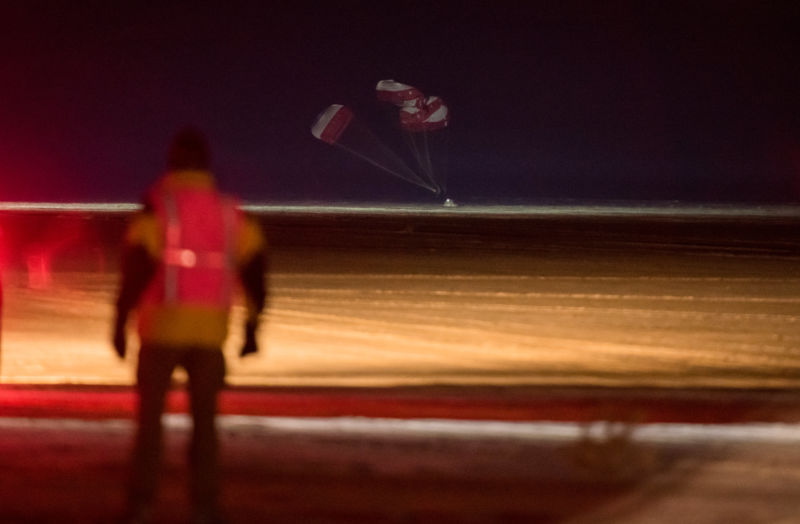
NASA/Aubrey Gemignani
NASA and Boeing announced Wednesday that the first crewed flight of the Starliner spacecraft will now take place as early as July 21. It moves the vehicle’s flight carrying NASA astronauts Suni Williams and Butch Wilmore from a previously announced April deadline.
Steve Stich, manager of NASA’s Commercial Crew Program, said the extra time needed to wrap up Starliner’s pre-flight review process and the delays were caused by traffic from other vehicles scheduled to visit the space station in June and the first half of the year. The month of July.
“As we look at all the different areas, most of the work for the aircraft will be completed in April,” Stich said in a teleconference with reporters. “But there is one area that extends to the May deadline, and it actually has to do with the certification preparations for the parachute system.”
Boeing has conducted more than 20 tests of its parachute system, including dropping the vehicle from different altitudes to test their deployment sequence and how the parachutes perform in different environments to simulate a return from space. Stich said there were no problems with the parachutes already installed on the Starliner. Mostly, it’s a review of all the tests Boeing has done to make sure the parachutes are performing as planned.
“It’s a matter of looking at all that data and looking at the data and making sure we’re ready to fly safely,” Stich said.
He said a final test was to be completed on the ground, with a parachute subsystem that retracts the Starliner’s forward heat shield and deploys the troch and main parachutes. That test is targeted for May.
Additional time was needed to complete the review process of the Starliner and its parachute system, which delayed the launch of the vehicle in June. At that time, however, NASA plans to launch SpaceX’s CRS-28 cargo delivery mission, which will attach to one of the lab’s docking hatches. This supply mission brings solar arrays to the station, which NASA doesn’t want to delay because it would delay planned spacewalks to install them. Lacking a docking port, the Starliner flight was pushed back in the second half of July.
NASA and Boeing must balance schedules with the United Launch Alliance, which is advancing orbit with its Atlas V rocket. The company is currently planning a USSF-51 mission to the Space Force this summer, and the Space Launch Complex-41 pad is needed for its Vulcan rocket launch in May or later this summer.
This is the third flight of Boeing’s Starliner spacecraft. The vehicle’s December 2019 launch failed to rendezvous with the International Space Station after several problems, including software problems. After fixing these problems, Boeing flew the vehicle on a second test flight in May 2022. Although the flight had some propulsion problems, the Starliner docked with the space station and set the stage for crewed flight testing.
After Boeing completes this critical test flight and NASA certifies the vehicle as ready for operational missions, the company will fly to the space station once a year for routine crew rotations. The first of these operational missions is planned for early spring 2024.
